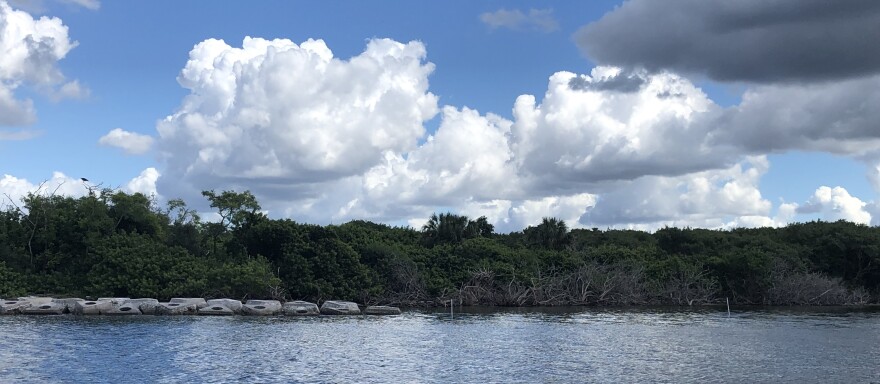Nearly 30 vulnerable bird species that call Florida home could lose more than half of their current range due to climate change and sea level rise, according to a new report from the National Audubon Society.
WATCH: Survival By Degrees: 389 Species On The Brink.
The study released Thursday said changing climate is forcing many North American birds to search for new habitats or risk extinction.
Julie Wraithmell, executive director of Audubon, stopped by Hillsborough Bay to highlight the impact. She said if no action is taken and temperatures rise by 3 degrees Celsius, the outlook for two-thirds of birds in North America is grim.
“But if we take action soon, and are able to control that temperature rise just to 1 1/2 degrees, we can create a better future for three quarters of those species, as well as for ourselves,” she said. “Because the same ecosystems that they depend upon for their living is also essential for our health, as well as our economic prosperity.”
In Florida, the report found that 29 of the 144 species here are what Audubon calls ‘climate vulnerable’ during the summer. That would happen if temperatures rise by 3 degrees Celsius, the equivalent of 37.4 degrees Fahrenheit.
The birds at risk includes 13 highly vulnerable species, including the whooping crane, the gray kingbird and the red-headed woodpecker.
Wraithmell visited the Alafia Bank Sanctuary within Hillsborough Bay, a state-designated Critical Wildlife Area. She said it's one of the most important nesting sites for wading birds in Florida. It’s also one of the most vulnerable places for birds because it's subject to sea level rise.
“We've already been seeing extraordinary rates of erosion on the sanctuary that affect the health of the habitat out there, and we know that's only going to increase as sea levels rise,” said Wraithmell.

Mark Rachal, sanctuary manager for Audubon Florida, led a tour on a small boat around the manmade Bird Island and Sunken Island – which is a portion of the Alafia Bank Sanctuary.
“Every storm that comes by… two or three feet are lost of the island and just kind of drops into the bay,” he said. “You can see along the shoreline, lots of dead, snags trees that were living along the shoreline eroded away, tipped over.”
Back in 2011, Rachal said a living shoreline was created to help protect the sanctuary. Cement blocks strategically line Sunken Island to break up wave energy and slow down erosion, although it is not a seawall, he said.

The living shoreline helps keep the island intact for pelicans, cormorants, herons, egrets, and spoon bills, among others. They are also pH neutral and designed for oysters, barnacles and other sessile organisms to attach immediately, which are food for fish and the birds.
Rachal said about 1,000 feet of shoreline is installed right now and starting next week, more will be placed there. When it's complete, he said it will extend about 5,000 feet.

Florida Chief Resiliency Officer Julia Nesheiwat joined Audubon staff on Hillsborough Bay Thursday, as part of a listening tour she’s making across the state.
She was appointed by Gov. Ron DeSantis back in August, tasked with preparing the state for impacts of sea level rise.
“I think it's so important to be able to advocate for these issues, coastal resiliency, and ultimately for to help Florida be more resilient,” Nesheiwat said.





